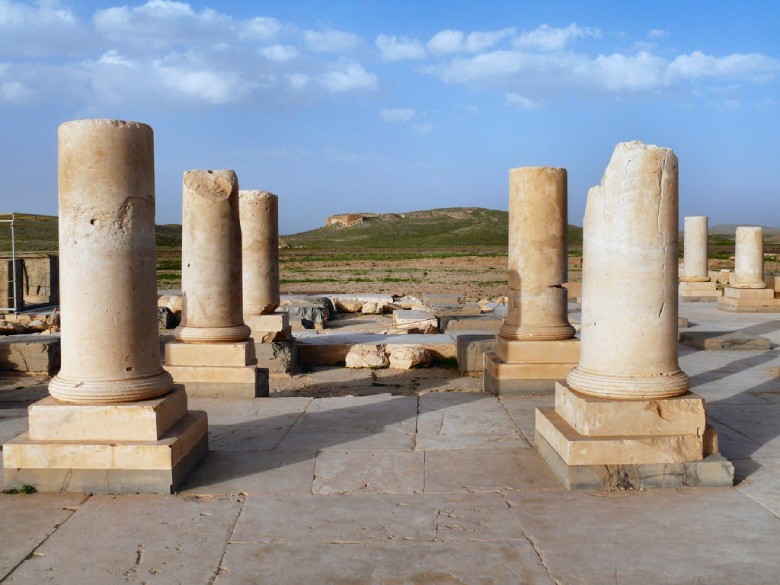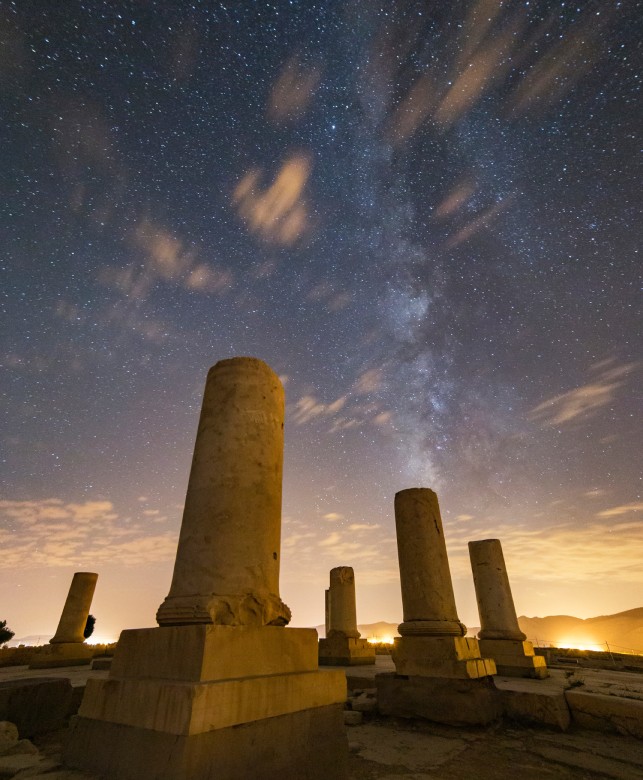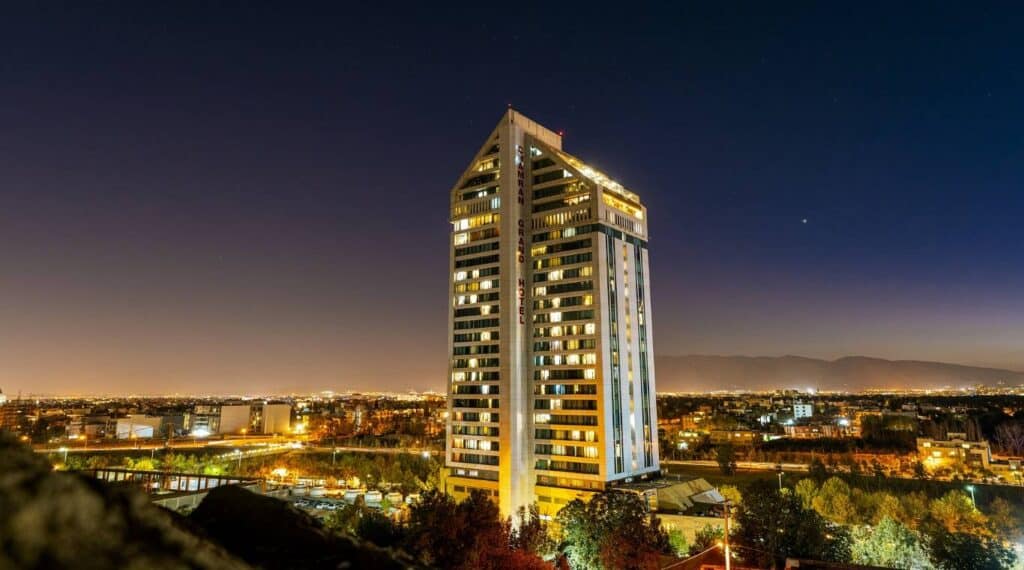Pasargadae in Shiraz: Exploring the Ancient Wonders
From the Tomb of Cyrus the Great to the Pasargadae Palace

At the foot of the Zagros mountains, about two hours north of Shiraz, a mythical site of ancient Persia awaits – Pasargadae. Known as the capital city of Cyrus the Great during his victorious Achaemenid Empire in the 6th century BC, Pasargadae encompasses vast, arid plains surrounded by ascertain mountains with little change over the past two and a half thousand years.
Despite waves of invasion by Greeks, Arabs, and Mongols over two and a half millennia, excavations at Pasargadae have revealed ancient Persia’s engineering brilliance and aesthetic mastery.
Intricate palaces, pleasure gardens, and ornate mausoleums stand as testaments to this prosperous civilization and the visionary leadership of Cyrus the Great.
For any history enthusiast, Pasargadae offers a compelling window into the origins of modern Iran, a few kilometers from the modern cultural hub of Shiraz.
Contents
Getting to know Pasargadae, Shiraz

Once the capital of Cyrus’ triumphant Achaemenid Empire in the 6th century BC, Pasargadae contains a wealth of structures worth exploring – from the royal gardens and pleasure pavilions commissioned by Cyrus himself to the medieval caravanserai and mosques built by later civilizations.
History of Pasargadae, Shiraz

The kings of the Achaemenid dynasty shared a passion for constructing grand palaces that would etch their legacy into Iran’s landscape.
After conquering Babylon, Cyrus sought to build an unparalleled palace showcasing the empire’s magnificence. He employed architects from across his kingdom to design and build Pasargadae, a model for palaces across the realm.
Pasargadae stands as an enduring jewel that promises to fascinate anyone keen on understanding Iran’s formative history and culture.
Origin of the Name Pasargadae

It has been about 200 years since this region was renamed from Marghab Plain to Pasargadae, but the main reason still needs to be clarified.
In general, there is no consensus on this. Even the word Pasargadae has been translated to have different meanings like the Persian fortress, place of Persian settlement, the throne of Parsa, habitat of Persians, the ancient city of Iran, and the capital of Cyrus the Great.
Architecture of Pasargadae, Shiraz

Pasargadae and Cyrus’ palace represent the first example of Achaemenid architecture, demonstrating the ancient world’s unique and unparalleled architectural style.
This complex consisted of buildings enclosed by a garden and a wall. Pasargadae was a large camp with gardens, palaces, and temples surrounded by a wall. As mentioned before, through structures like Pasargadae and Persepolis, the Achaemenids wanted to demonstrate the glory of their monarchy to the whole world.
Indeed, Pasargadae’s architecture is one of the best examples of ancient Iranian art.
Sections of Pasargadae Complex, Shiraz
Based on the excavated areas, there are 4 palaces and 2 chambers, one being the private palace and the other called the ceremonial palace.
Cyrus’ Tomb
Cyrus’ tomb in Pasargadae integrates Persian, Mesopotamian, Greek, and Egyptian architecture. This 11-meter structure has a very simple appearance and is made of white limestone. At the top of a 6-step platform lies the tomb chamber with a gable roof visible from outside.

Mozaffari Caravanserai
Mozaffari caravanserai, located near Cyrus’ tomb, was built during the Mozaffarid dynasty. Today, only the walls and foundations of this 200-meter caravanserai remain.
Atabaki Mosque
This mosque was built in the 7th century AH during the Atabakan government. At that time, they placed columns around Cyrus’ tomb and built this mosque.
Today, these columns are located in the main courtyard near Cyrus’s private palace, and their Arabic inscriptions are still visible.
Ceremonial Palace
The ceremonial palace is one of the important palaces in Pasargadae, with a central hall with eight columns and four columned porches surrounding it. The roof was made of wood, the columns, wall plinths, and wall corners were made of stone, and the walls were made of adobe.

Private Palace
As the name suggests, this was Cyrus’ residence and the largest palace among the buildings of this complex. What distinguishes this palace from other existing structures is the number of columns, the color of column plinths, the number of porches, and the form of the building.
Gateway Palace
As the name implies, this palace was the entrance gate to the royal complex, having had an eight-columned hall and the winged man Petroglyph.
Tol-e Takht
Located uphill overlooking the entire complex, it is hypothesized that this was likely the location of military fortifications with an area of 8000 sq. meters situated on a large mound at Pasargadae’s northern end.

Winged Man Petroglyph
Compared to other structures, one of the more intact sections of Pasargadae is the winged man Petroglyph, depicting a bearded man with a short beard, a long cloak, a crown on his head, and four wings looking towards the palace center.
Best Time to Visit Pasargadae, Shiraz
Visiting Pasargadae is possible in all seasons, and tourists visit it yearly. However, spring is the best season for visiting this complex.
You should plan your Pasargadae trip when the weather is clear so you can wander around Cyrus’ palace comfortably for a few hours.

Access Route to Pasargadae, Shiraz
The distance between Shiraz and Pasargadae is 135 km, and the distance between the Persepolis and Pasaragadae is about 82 km.To get to Pasargadae Shiraz, you must first enter the Shiraz-Isfahan road.
Then continue this route towards Saadat Shahr until you reach a side road. About 20 km later, you will arrive at the village of Madarsoleyman. You are close; Pasargadae town is only 4 km away.
Attractions Around Pasargadae, Shiraz

To see Pasargadae, you have to travel to Shiraz. Traveling to Shiraz is more than a trip. It’s a journey into history, a chance to immerse yourself in a rich culture, bringing home unique souvenirs, experiencing traditional arts and crafts, enjoying nature, tasting faloodeh Shirazi, and going for leisurely evening walks in the heart of the city’s charming streets and delightful weather.
The attractions in Shiraz are too many to count. Make sure to visit Persepolis, Naqsh-e Rostam, Sa’di’s Mausoleum, Hafez‘s Tomb, the Vakil Mosque, and more.
Conclusion
Tucked into the Zagros Mountains lies the ancient ruins of Pasargadae. This city was once the capital of Persia under Cyrus the Great. Visitors can explore the old palaces, gardens, and carvings left behind. Although many questions remain about its past, Pasargadae still inspires awe. The art and buildings show the genius of one of history’s greatest empires. Walking these sites lets people connect with Persian culture’s roots that still shape today’s world. This wonder of the ancient world comes alive among the foothills and ruins.
Visiting Pasargadae: FAQs
What are the visiting hours for Pasargadae?
The visiting hours for Pasargadae are from 8:00 AM to 5:00 PM.
How much does it cost to visit Pasargadae?
The entrance fee for visiting Pasargadae is $10 for international visitors and 200,000 Iranian Rials for domestic visitors.
What are the must-see attractions in Pasargadae?
The must-see attractions in Pasargadae include the Tomb of Cyrus the Great, the Palace of Cyrus, the Private Palace, and the Caravanserai.
Can I take photographs in Pasargadae?
Yes, photography is allowed in Pasargadae. However, the use of tripods and professional equipment requires special permission.
Are there guided tours available in Pasargadae?
Yes, guided tours are available in Pasargadae. You can join a guided tour to learn more about the historical significance and architectural features of the site.
How long does it take to explore Pasargadae?
The average time to explore Pasargadae is around 2 to 3 hours, depending on your pace and level of interest.
Are there any restaurants or cafes near Pasargadae?
Yes, there are restaurants and cafes located near Pasargadae where you can enjoy a meal or refreshments during your visit.
Is there parking available at Pasargadae?
Yes, there is parking available at Pasargadae for visitors arriving by car or other vehicles.
Are there any accommodations near Pasargadae?
Yes, there are accommodations near Pasargadae.







